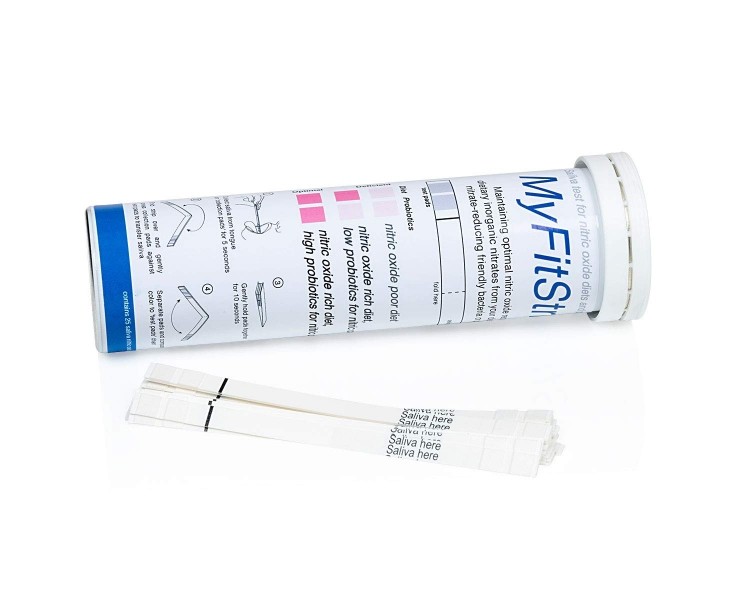New Test Strip Detects NO Levels

The test taps into the growing demand from consumers for personalized data, with other testing companies out there ranging from the Omega-3 Index offered by OmegaQuant, to Inside Tracker (blood analysis) and Nutrigenomix (genetic profiling).
Dietary supplements positioned to boost NO levels are becoming more prevalent on store shelves, but many of these are positioned in the sports nutrition realm (pre-workout supplements in particular). While NO boosters are also popping up in products positioned for heart health, that category is still dominated by omega-3s and phytosterols/stanols.
According to MyFitStrip, by using a nitric oxide test strip, users are able to make real-time dietary adjustments and other lifestyle changes that impact cardiovascular wellness. In 1998 the Nobel Prize for Medicine was awarded for the discovery of the important role that nitric oxide plays in cardiovascular health and wellness. Since then, a number of clinical trials have shown that NO is a helpful metric to measure for maintaining a healthy blood pressure, increasing athletic endurance, and delaying vascular aging.
According to the Centers for Disease Control, cardiovascular disease is the leading global cause of death, and poor heart health is a risk factor for other dangerous health conditions. Approximately one in every three, or 78 million US adults, have high blood pressure. About one in five are unaware of their condition.
Our bodies naturally produce nitric acid to increase blood flow, maintain healthy blood pressure, and boost physical performance. In order to maintain optimal nitric oxide levels, nitrate from plant-based foods as well as the proper suite of bacteria on the tongue is needed. Within the body, dietary nitrate from foods like beets, kale, arugula and other dark leafy greens is converted to nitric oxide. Those with diets that are nitrate-deficient are at risk for heart attacks and strokes, as well as related conditions like gout, obesity, hypertension, and diabetic insulin resistance.
But not all NO levels are created equal. Growing conditions have a major impact on levels. For instance, broccoli tested in New York City had a mean concentration of 279 PPM of nitrate, and some samples had nearly none. While in Raleigh, NC, the mean concentration was 553 PPM and the range between high and low samples was much narrower.
Amazon has a 25-pack of MyFitStrip Nitric Oxide Test Strips listed for $22.50.









